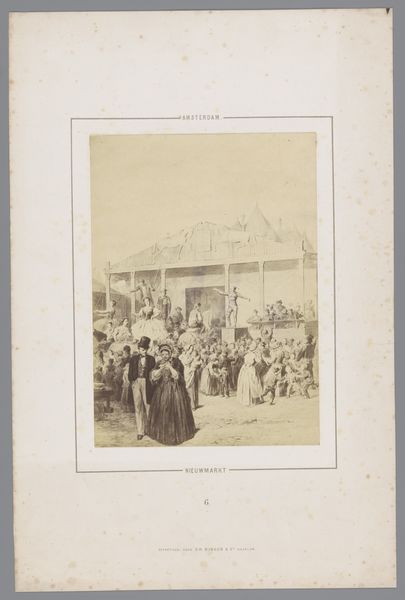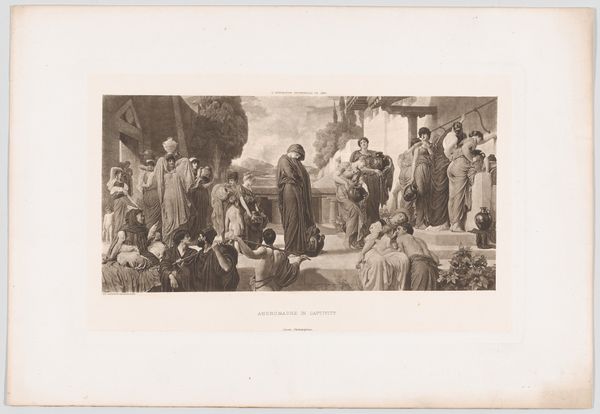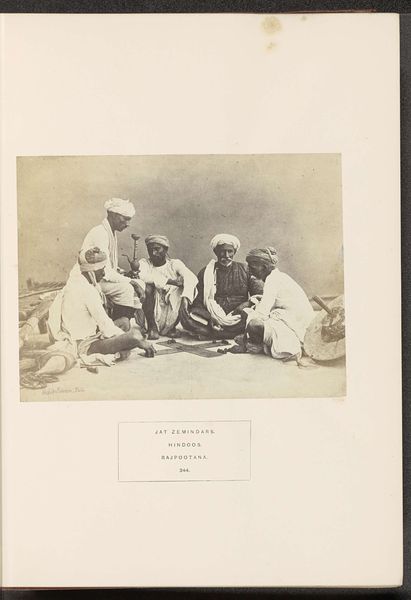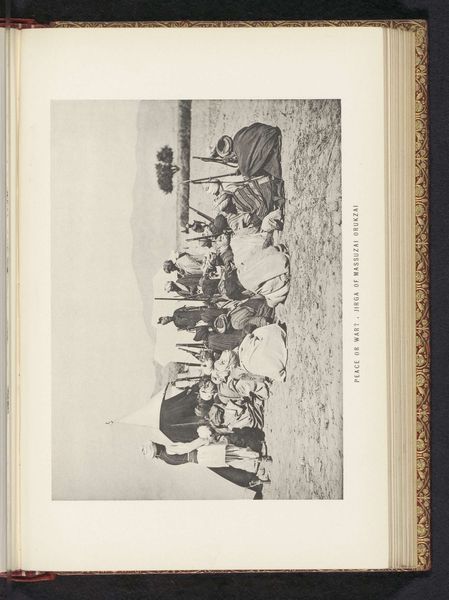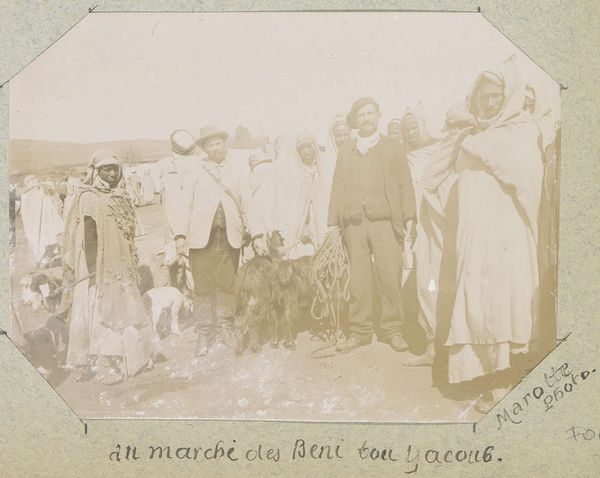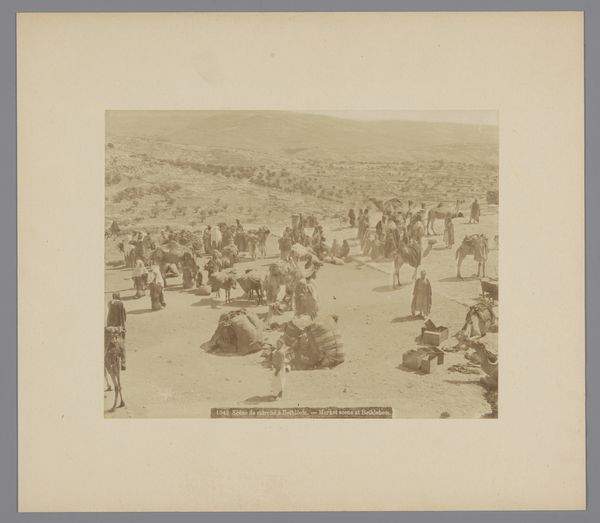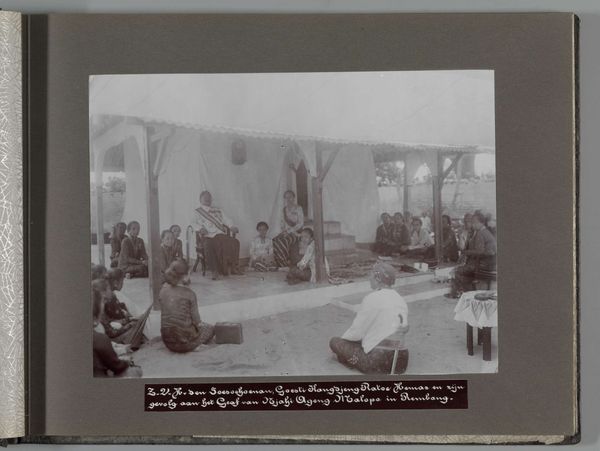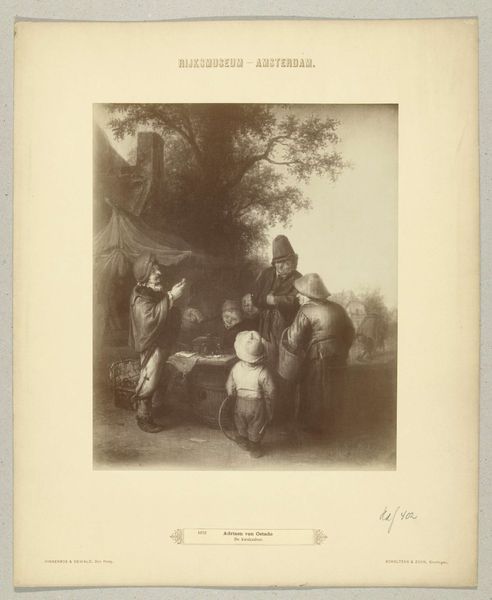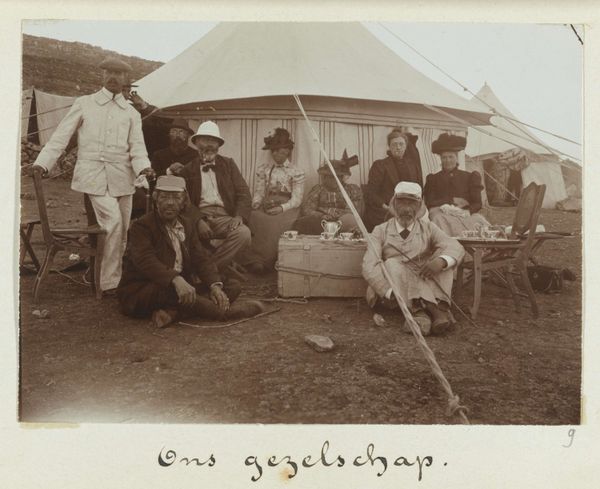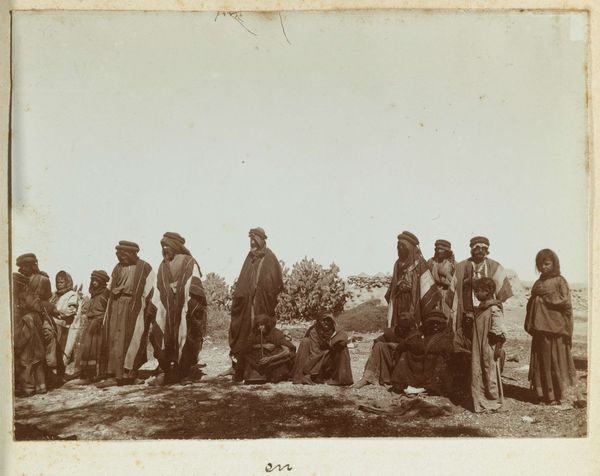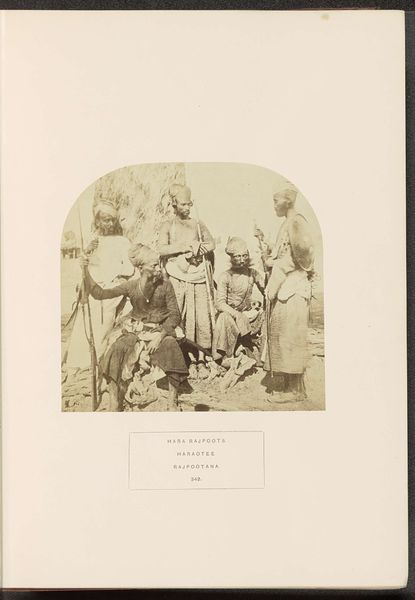
Gezelschap voor een tent ter gelegenheid van een huwelijk in Berrouaghia (Algerije), waaronder personen aangeduid 'M. Graëchen' en 'Abbas Abdallah ben Hassen Khajda' Possibly 1895
0:00
0:00
photography, albumen-print
#
portrait
#
photography
#
group-portraits
#
orientalism
#
islamic-art
#
genre-painting
#
albumen-print
Dimensions: height 114 mm, width 149 mm
Copyright: Rijks Museum: Open Domain
Editor: This albumen print, possibly from 1895, titled "Company in front of a tent on the occasion of a wedding in Berrouaghia (Algeria), including persons named 'M. Graëchen' and 'Abbas Abdallah ben Hassen Khajda'", appears to document a specific event. What strikes me is the contrast between the group in European military dress and the Algerian wedding party. What symbols or visual cues do you notice in this photograph? Curator: The tent itself, of course, becomes a crucial symbol. Throughout history and across cultures, the tent represents both shelter and transience, the domestic and the nomadic. Consider how its presence here intersects with the colonial narrative suggested by the French military uniforms. Editor: So the tent creates a sort of symbolic meeting place? Curator: Precisely. It's a threshold. Observe the attire: The wedding party is draped in light, flowing garments. The European figures, in their darker, more rigid uniforms, seem to impose a different kind of order. Notice how they are positioned. Is there a hierarchy suggested? Editor: It does seem that the Europeans are more central within the composition. Curator: The arrangement might signify the power dynamics at play. Light versus dark, flowing versus structured, indigenous custom versus colonial influence— these visual symbols coalesce into a complex statement. What feelings does that color evoke for you? Editor: It brings up conflicting ideas. The scene feels celebratory because of the wedding, but there's a definite undercurrent of tension created by that opposition you pointed out. I never would have considered that before! Curator: Exactly! Understanding the cultural memory embedded within symbols allows us to read the past with greater nuance. Hopefully we can all continue this interpretation.
Comments
No comments
Be the first to comment and join the conversation on the ultimate creative platform.

